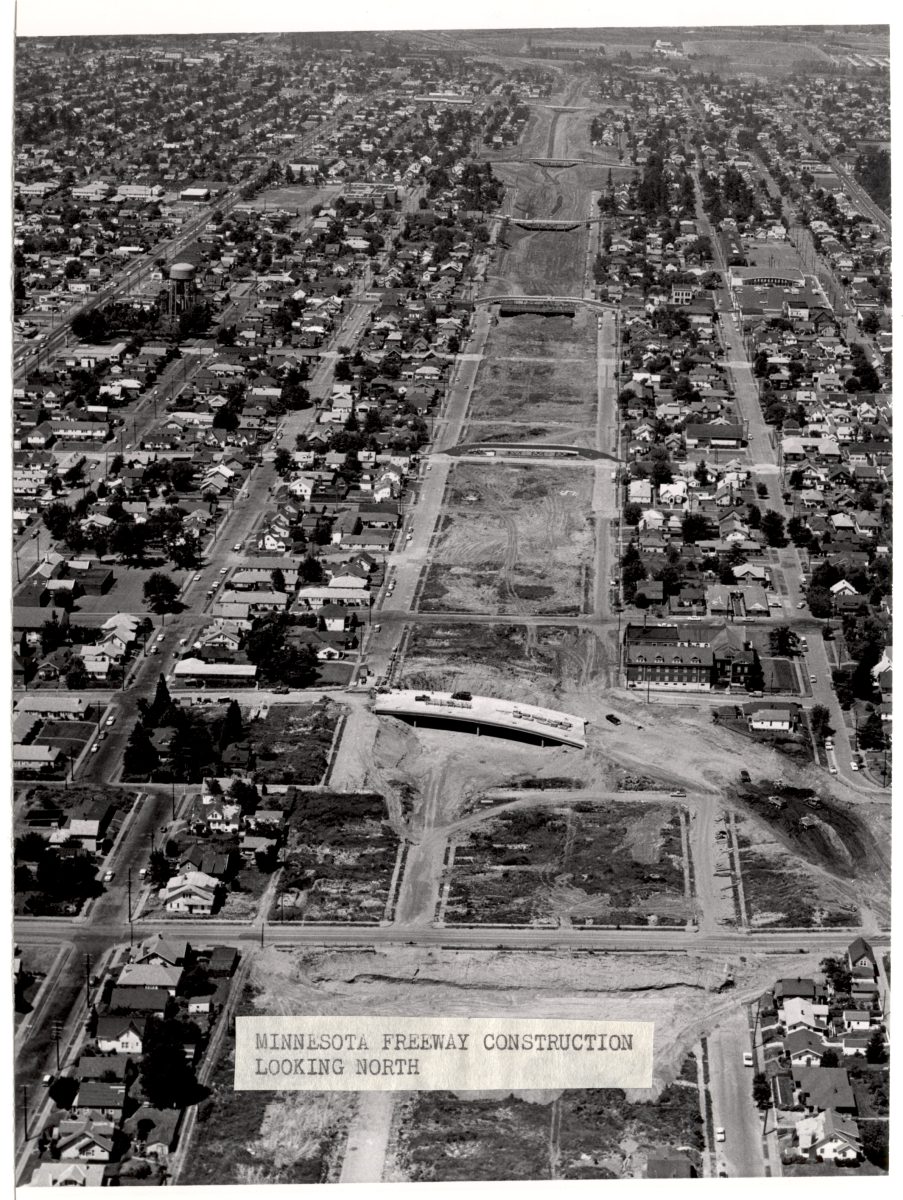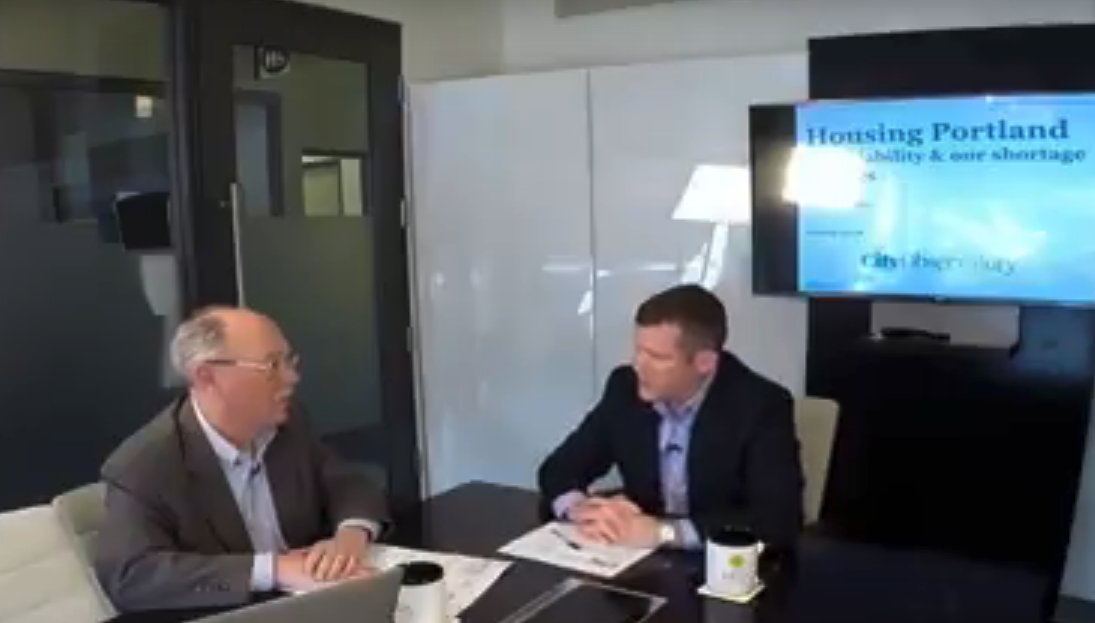What City Observatory did this week
1. Housing reparations for Northeast Portland. The Oregon Department of Transportation is selling its plan to spend half a billion dollars widening a stretch of freeway in Portland by claiming it will help knit together the communities divided when the freeway was built in the 1960s, including the city’s historic African-American neighborhoods. At the time, ODOT demolished more than 300 homes to build the freeway–but didn’t replace them. We think a better way to repair the damage done to the neighborhood would be to rebuild those homes. At today’s prices they’d be worth about $140 million.
 2. The Portland Housing Market.
2. The Portland Housing Market.
City Observatory’s Joe Cortright is interviewed by HFO TV on the current state of the Portland housing market, the outlook for housing affordability and the impacts of the city’s inclusionary zoning policies.
Must read
1. The red/blue map, reimagined. We’re suckers for a good map. And while its part of our national iconography, we’ve never been happy with the traditional red/blue state boundary chloropleths that are used to convey the nation’s political divisions. The maps exaggerate the weight of sparsely populated rural areas, and convey the impression that red outweighs blue overall (recall that in the 2016 election Hillary Clinton actually got xx million more votes than Republican Donald Trump). This new map from Kenneth Field replaces the blocky state choropleth with a very finely grained dot-density map that shows much greater nuance: emphasizing the concentration of population in metro areas, showing the patterns with those metro areas, and clearly conveying the weight of political sentiment.
2. A modest proposal to reduce segregation: Last week marked the 50th Anniversary of the Fair Housing Act, and produced a lot of reflection on how little progress has been made to reduce the profound racial and economic divisions that mark American housing. UCLA law professor Johnathan Zasloff suggests that maybe its time for a more aggressive, straightforward economic approach to promoting integration: paying people to integrate segregated neighborhoods. He suggests a system of modest grants for down payments or several months of rent (say $10,000 or so) for people who moved into otherwise segregated neighborhoods (i.e. whites moving into predominantly black neighborhoods or blacks moving into predominantly white neighborhoods). Zasloff and his colleagues estimate that a program for metropolitan Buffalo, New York, would require 10,400 pro-integrative moves to reduce the dissimilarity index below .60, at a cost of roughly $285 million. They propose to phase out the subsidies as the dissimilarity index declines in a city.
3. The growth of ride-hailing in New York City. Todd Schneider taps New York’s on line trove of for-hire trip data to track the industry’s growth. Trips taken via Uber now outnumber yellow taxi trips in New York City. More strikingly, the total number of for hire trips (yellow taxi plus ridehailing) has grown 40 percent since 2014, from 15 million monthly trips to more than 25 million trips. Unconstrained by the medallion system that limits the number of yellow taxis, ride-hailing companies continue to add vehicles in the city, further slowing traffic. It’s doubtful that the newly enacted surcharge on these rides will blunt their growth, but we’ll follow these numbers closely in the months ahead.
New knowledge
Soda taxes reduce sugary soda consumption: According to Consumer Reports new study from Drexel University looks at the effects of Philadelphia’s 1.5 cents per ounce sugary beverage tax. Pre- and post-tax surveys of Philadelphia residents show a 38 percent decline in the consumption of soda; meanwhile surveys of residents in surrounding cities with no tax show no change. These data show that the tax is effective in nudging consumers to change their behavior–which also explains why they’re being fought tooth and nail by soda companies.
In the news
City Observatory’s post debunking the latest round of suburban triumphalism was the weekend’s most read article on The Overhead Wire.




